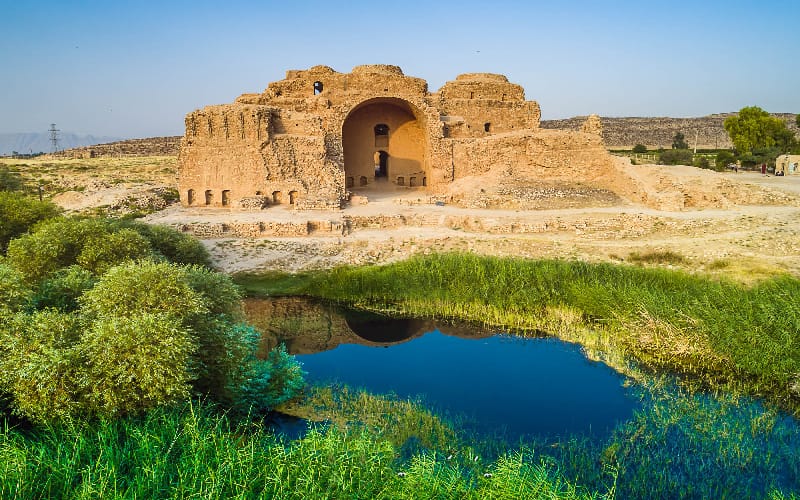Firuzabad: The Ancient Sasanian Capital in Iran
Visitor Information
Popularity: Very Low
Google Maps: View on Google Maps
Country: Iran
Civilization: Achaemenid, Sassanid
Remains: City
History
Firuzabad is located in Fars Province, in the southwestern part of modern Iran. The city was originally founded by Ardashir I, the first ruler of the Sasanian Empire, on the site of an earlier Achaemenid settlement. This earlier city, known as Gor or Ardashir-Khwarrah, meaning “Glory of Ardashir,” occupied a low-lying area that had been flooded during Alexander the Great’s conquest.
In the early 3rd century CE, Ardashir I rebelled against the Parthian ruler Artabanus V and established Gor as his capital. To reclaim the flooded land, he engineered a tunnel to drain the lake, allowing the city to flourish as a political and administrative center. Gor remained the capital of the Ardashir-Khwarrah province and was a significant seat of power during the early Sasanian period. Several Sasanian kings, including Shapur I and Shapur II, were born in this city.
During the 7th century, Gor resisted the Arab Muslim conquest for several years. However, after prolonged conflict, the city fell around 649–650 CE. Despite this, the city experienced a revival under the Buyid dynasty in the 10th century. Fanna Khusraw, a Buyid ruler, used the city as a residence. At this time, the city’s name was changed from Gor, which meant “grave” in New Persian, to Peroz-abad or Firuzabad, meaning “City of Victory,” by order of Adud al-Dawla.
The original city of Gor was eventually abandoned during the Qajar era. A new town, also called Firuzabad, was established about three kilometers to the east.
Remains
The ancient city of Gor was built with a distinctive circular layout about two kilometers in diameter. It was encircled by a wide trench and mud walls, approximately 50 meters across, designed for defense. The city had four main gates named after deities or royal figures: Hormozd to the north, Ardashir to the south, Mithra to the east, and Wahram to the west.
At the heart of the city lay a royal compound within a circle of 450 meters radius. This area featured a unique 30-meter-high spiral tower called Terbal. The tower’s helical ramp wrapped around its exterior, a design not found elsewhere in Iran. Scholars consider this tower a forerunner to the minaret of the Great Mosque of Samarra. The exact purpose of the Terbal remains debated.
Nearby, the Ghal’eh Dokhtar fortress, or Maiden Castle, stands on a hill close to Firuzabad. Built with large dressed stones on the facade and rough river cobbles inside, the walls were held together with gypsum mortar. The fortress includes staircases connecting internal chambers and uses squinches, architectural supports in the corners, to hold up domes, an innovative technique for its time.
The Palace of Ardashir, also known as the fire temple, is a surviving Sasanian structure combining religious and defensive functions. It was constructed as a fortified palace and served as a ceremonial center. The site also contains reliefs depicting royal figures and inscriptions in Inscriptional Pahlavi script. The city’s mint used the signature ART to mark coins produced there during the Sasanian era.
Defensive features such as the mud wall and ditch remain visible, while the fortress walls, though partially ruined, still demonstrate impressive scale and craftsmanship. The spiral tower and palace are well-preserved landmarks. Archaeological excavations have uncovered urban infrastructure elements consistent with a major administrative and ceremonial city of the Sasanian period.





